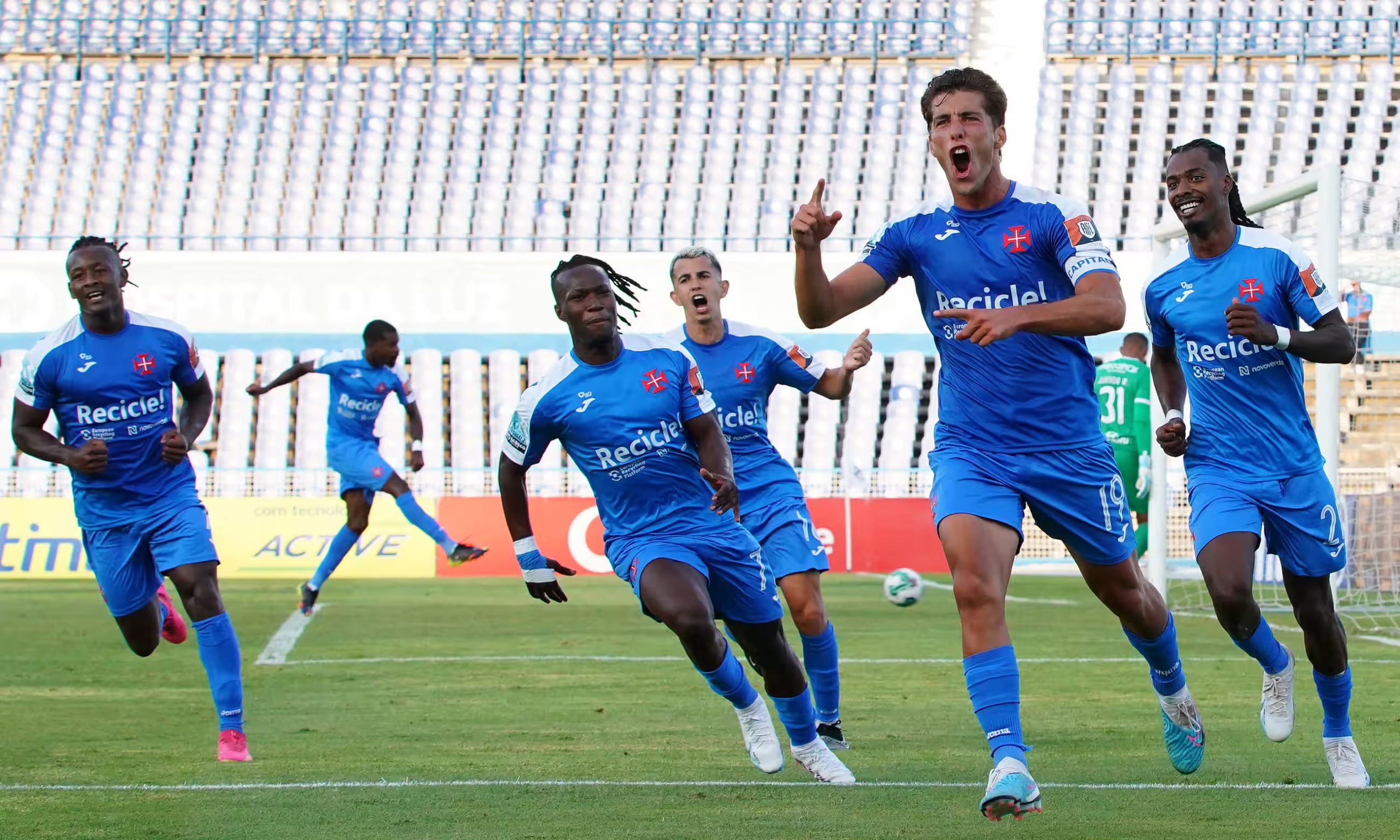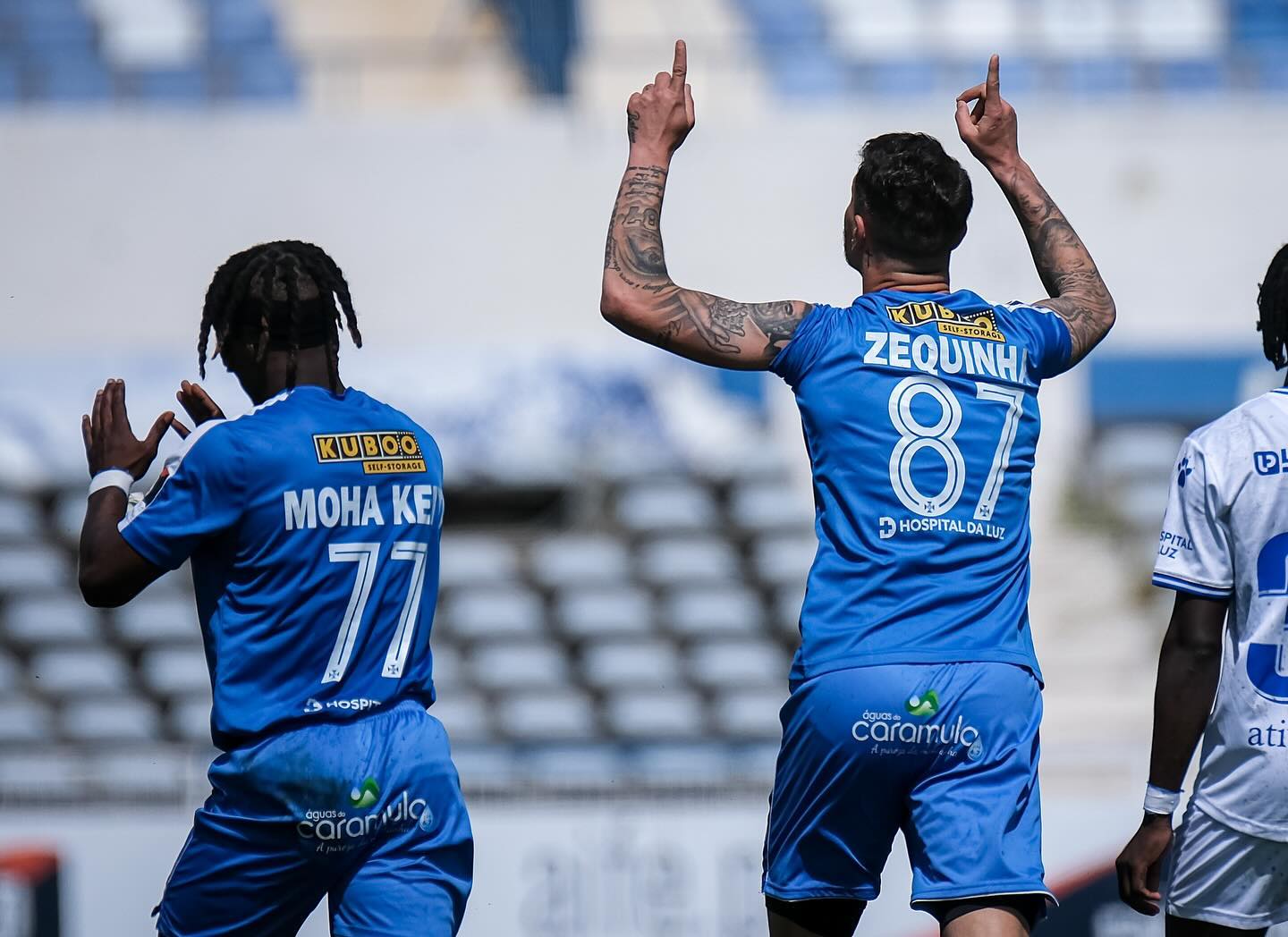Artigo sobre a queda, a luta e a ascensão do Belenenses, um dos clubes patrocinados pela KUBOO.

‘For me it’s like a movie’: the fall, fightback and rise of Belenenses
By: Morgan Ofori
Five seasons ago, Luis Palma attended a friendly match in a suburb of Lisbon with his wife, son and dog, Pipoca. “It translates as popcorn in Portuguese,” he says. “And it was the game where I decided I was going to support [and be a member of] Belenenses.”
Palma’s fandom coincided with a tumultuous time for Clube de Futebol Os Belenenses. In 1999, all clubs in Portugal’s top two professional divisions were required to operate through a Public Limited Sports Company, widely known as a Sociedade Anónima Deportiva (SAD), the idea being that it would lead to greater global investment into Portuguese football.
In 2012, Belenenses’s membership voted to sell a 51% controlling interest to an investment fund operating under the name of Codecity Sports Management. The relationship between Codecity and the club’s membership soured, however, prompting legal battles over various financial and contractual issues, including the members’ right to buy back the stake at a future date, which it was claimed formed part of the contract signed at the point of sale. The courts ruled in favour of Codecity, with the membership losing any right to buy back its shares.
By September 2018, Codecity had formed Belenenses SAD in the Primeira Liga, Portugal’s top division. A subsequent vote by the CF Os Belenenses club assembly led them to form a new football club, starting in Lisbon’s regional bottom tier. It was a desperate state of affairs yet remarkably, like an Iberian AFC Wimbledon, they fought back and have risen to the second tier.
André Serra, who played for Belenenses throughout all five promotions and scored the winner in their first professional game in LigaPro, the second tier, is not surprised at how quickly the club has soared, in large part because of their support. “People tell me: ‘You have played many games for Belenenses,’ but for me it’s like a movie and I’m the main character, making history in the present,” Serra says. “I remember a sixth division game we played and there were around 8,000 fans there. I looked at my friends and said: ‘This is big – we have the capacity to go to the better leagues.’”
Palma, whose love affair with Belenenses began with a 3-2 home win against Atlético Clube de Portugal at their 20,000-seater home, the Estádio do Restelo, when the club were in the sixth tier and he was in attendance with his family and dog, names the club’s multi-sports facilities as a key reason he remains attached to O Belém. “Belenenses has a nice history in other sports with several championships in handball, football and basketball,” says the software engineer. “I go to those games on Saturday afternoon. I’m always there and I check whenever they are playing.”
Belenenses received a boost last year when the courts deemed them and Belenenses SAD to be separate entities, forcing the latter to change their name to B SAD. An attempt to merge with Cova da Piedade failed and B SAD, who had suffered back-to-back relegations in 2022 and 2023, were condemned to the Setubal district championships – the lowest tier of Portuguese football.
The original Belenenses have an illustrious history. They were the first team outside Portugal’s big three – Benfica, Porto and Sporting – to win the league and only Boavista in 2001 have matched that triumph since. Their solitary title win, under the legendary coach Augusto Silva in 1946, was the culmination of a period spanning the 1930s and much of the 1940s when the club were consistently challenging for top honours.
Belenenses had been ever present in the Primeira Liga (along with the big three) until their relegation in 1982. Their last major trophy, meanwhile, came in 1989 when a side managed by Marinho Peres clinched the Taça de Portugal.
“I was coached by João Alves, an ex professional who played for Benfica as well as for the national team,” says José Taira, who played for Belenenses in the early 1990s and has been part of their meteoric rise back up the divisions in his role as sporting director. “He built a very strong Belenenses squad, one that was considered by many to play the most ‘football’ in the league. We went up against the likes of Benfica, Sporting and Porto, and gave them a run for their money. It resembled the Arsène Wenger and Arsenal football style.”
Speaking about the SAD saga, Taira adds: “It is one thing if an investor takes on a partnership approach with the club and its structure; it is another if said investor decides to reshape or change it, unilaterally, without accounting for history, culture and instilled MO.” Taira agrees that clubs need investors but believes that many do not understand that football is about more than profit.
Two months after Belenenses received court approval to use the Cruz de Cristo as its emblem, the club’s members also approved the forming of a society single-person sports association by quotas (SDUQ). This enabled a single share to be wholly held by the club, an alternative to SAD, which is a rarity in Portugal. Despite this, Taira believes the gap between the big three and the rest remains far too wide, which in turn has a negative impact on the performance of Portuguese teams in Europe. Benfica, for example, have lost all four of their Champions League fixtures so far this season.
“What fosters internal competition?” Taira asks. “The revenue from broadcasting rights as well as sponsors need to be channelled into the improvement of each teams’ conditions, otherwise history will repeat itself and the big teams will not perform to international standards as they are underprepared to do so.”
Belenenses are 17th in the 18-team LigaPro, but Saturday’s 2-0 win against Penafiel lifted them five points off bottom place. It has been a rough start in the second tier but Taira is not overly concerned, deeming the team’s travails part of an adaptation process. He is, however, under no illusion about the task ahead. “We received €350,000 for last year’s promotion. However, in order to be up to standard with the requirements established by the league more than €450,000 was invested – so essentially we had an initial handicap of €100,000,” he says. “This investment referred to lighting, pitch conditions as well as other miscellaneous items, yet none of these win games by themselves.
“We have the tide against us when more money is directed into infrastructure requirements rather than for team-building purposes, rendering us rather restricted when it comes to off-season transfers. Light poles and grass conditions do not score goals, players do.”
It is easy to detect Taira’s frustration, but he as much as anyone will be aware that Belenenses have what it takes to rise to a challenge.
Ler artigo: https://www.theguardian.com/(…)


